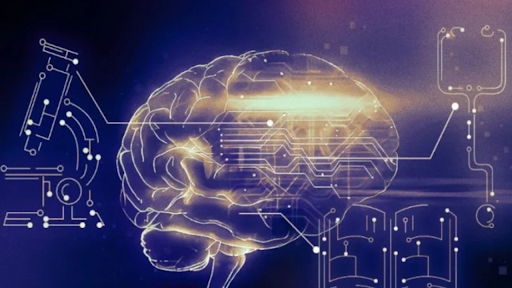Why Is 24ot1jxa Bad? Hidden Dangers You Must Know
Introduction: The Invisible Threat Lurking Online
In today’s digital age, where everything from shopping to banking happens online, staying secure is more important than ever. While most threats are recognizable, some come cloaked in cryptic codes—one such example is 24ot1jxa. If you’ve stumbled upon this strange code in suspicious files, odd links, or unexpected browser behavior, you may be wondering: why is 24ot1jxa bad? In this article, we’ll take a deep dive into what this code might represent, the risks it poses, and how you can protect yourself.
What Exactly Is 24ot1jxa?
At first glance, 24ot1jxa appears to be a random string of characters. It doesn’t correspond to any legitimate application, known platform, or service. In reality, it’s often associated with malicious activity such as malware, phishing attacks, and unauthorized system changes. The ambiguity and lack of any verifiable source make it especially concerning. So, why is 24ot1jxa bad? Because it is often a signal of deeper cyber threats hiding in plain sight.
Where Does 24ot1jxa Commonly Appear?
Understanding where you might encounter 24ot1jxa helps prevent interaction with it. Most commonly, it is seen in the following places:
- Torrent file names or cracked software
- Suspicious email attachments
- Browser redirect URLs
- Fake downloads from shady websites
- Embedded links in social media messages or forums
You may not recognize the threat immediately, but once you interact with these elements, you’re exposing your device to major risks. That’s why users are increasingly asking, why is 24ot1jxa bad, and how can it be avoided?
The Real Dangers Behind 24ot1jxa
1. Malware Infection and System Corruption
Many links or files with 24ot1jxa in the name harbor malware. This can include:
- Trojans that provide backdoor access to hackers
- Ransomware that encrypts your files until a ransom is paid
- Spyware that secretly monitors your activity
These malicious elements can damage your system or steal sensitive data. Why is 24ot1jxa bad? Because it often serves as the front door to severe system vulnerabilities.
2. Phishing and Credential Theft
One of the most dangerous uses of 24ot1jxa is in phishing scams. Victims are tricked into clicking on seemingly legitimate links that lead to:
- Fake login pages
- Deceptive banking interfaces
- Identity verification forms
Once you input your credentials, they’re instantly harvested by attackers. If you’re wondering why is 24ot1jxa bad, it’s because it can lead to full account takeovers and identity fraud.
3. Browser Hijacking and Unwanted Redirects
Have you noticed your browser behaving strangely after clicking a link or downloading a file containing 24ot1jxa? You might experience:
- Homepage changes
- Constant pop-ups
- Unfamiliar toolbars
- Automatic redirects to sketchy websites
These symptoms indicate that your browser has likely been hijacked. This not only disrupts your browsing but may also expose you to more malware.
How 24ot1jxa Spreads Across Devices
Untrusted Download Sources
If you’re downloading software or media from unofficial or pirated websites, you’re in the danger zone. These platforms often bundle their content with malicious code. That’s one of the main reasons why is 24ot1jxa bad—it’s a warning sign that you’re dealing with potentially infected material.
Social Engineering in Messaging
Cybercriminals often disguise 24ot1jxa links as helpful resources in social media posts or messages. You might receive a link from a friend whose account was compromised. Once clicked, it can infect your system and continue spreading.
Signs Your Device Might Be Infected
Sluggish Performance
One early indication that something’s wrong is your device slowing down. Malware linked with 24ot1jxa often runs in the background, consuming memory and processing power.
Unexpected Changes
Sudden browser behavior, new software installations, or strange error messages can also signal trouble. If you ask yourself, “Why is 24ot1jxa bad if I only clicked once?”, know that sometimes one click is enough to compromise your system.
What To Do If You’ve Encountered 24ot1jxa
Step 1: Disconnect Immediately
To stop further data transmission or external control, disconnect your device from the internet as soon as you notice something suspicious.
Step 2: Run a Full Malware Scan
Use a reputable antivirus like Malwarebytes, Windows Defender Offline, or Norton Power Eraser. Keep your software updated to catch even the newest threats.
Step 3: Change Your Passwords
After cleaning your system, immediately update passwords for email, banking, and cloud storage accounts. Where possible, activate two-factor authentication.
Step 4: Report the Threat
If you encountered the suspicious link on a public platform, report it to the administrators. If damage has occurred, consult a cybersecurity professional.
How to Remove 24ot1jxa Malware Effectively
Use Reliable Security Tools
Trusted antivirus software can remove most malware associated with 24ot1jxa. Make sure to schedule regular scans and enable real-time protection.
Manual Removal for Advanced Users
If you’re comfortable with advanced troubleshooting, boot into Safe Mode and:
- Remove unknown programs from startup
- Use Task Manager to end suspicious processes
- Carefully edit registry entries (only if you know what you’re doing)
Prevention: How to Avoid 24ot1jxa in the Future
Stick to Trusted Websites
Avoid shady platforms offering free downloads, cheats, or cracks. These are breeding grounds for malicious links.
Keep Your Software Updated
Software updates often contain security patches. Failing to install them leaves your system exposed to threats like 24ot1jxa.
Backup Your Data Regularly
Use encrypted external drives or secure cloud storage to back up important files. That way, you won’t lose your data if infected.
Early Detection: Recognizing 24ot1jxa Threats
- Be cautious of links with strange characters, like “24ot1jxa”
- Watch for pop-ups or downloads that initiate without your input
- Monitor installed programs regularly to detect unwanted changes
The sooner you recognize the signs, the easier it is to prevent long-term damage. That’s another strong reason why is 24ot1jxa bad—it hides itself well until it’s too late.
Who Is at Greater Risk?
Inexperienced Internet Users
Children, seniors, and those less tech-savvy are more likely to click on malicious links or download infected files.
Users of Risky Platforms
People browsing torrent sites, unregulated forums, or cheat-sharing websites are more likely to encounter threats like 24ot1jxa.
Recap: Key Takeaways on Why Is 24ot1jxa Bad
- It’s linked to malware, phishing, and browser hijacking.
- Often appears in shady downloads or suspicious links.
- Can lead to identity theft or permanent system damage.
- Easily spread through messages and unsafe websites.
- Prevention requires awareness and up-to-date protection.
FAQs:
Q1: Why is 24ot1jxa bad for my system?
A: It’s associated with malware and phishing, posing serious risks to your security, privacy, and data.
Q2: How can I identify a 24ot1jxa infection?
A: Look for signs like slower performance, odd pop-ups, or changed browser settings.
Q3: Is 24ot1jxa a virus?
A: While it’s not a virus by itself, it often represents or carries malware, making it extremely dangerous.
Q4: Can antivirus software remove 24ot1jxa threats?
A: Yes, if you use trusted and updated security tools like Malwarebytes or Norton.
Q5: Can clicking a single 24ot1jxa link infect my computer?
A: Unfortunately, yes. One click can download malicious software in the background.
Conclusion:
The digital world is full of hidden dangers, and 24ot1jxa is a prime example of how subtle threats can cause significant harm. By staying informed and cautious, you can safeguard your data, your devices, and your digital identity. Always remember, why is 24ot1jxa bad? Because it’s a warning sign of everything you want to keep far from your computer and your life.
Stay in touch to get more news & updates on Fin Tech Zoom!







